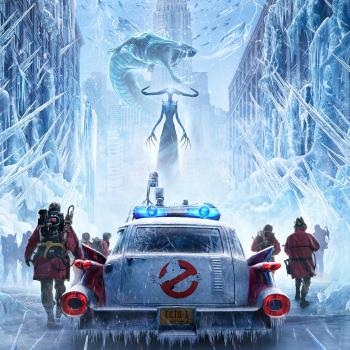Review of Star Trek Into Darkness, Directed by J. J. Abrams
A confession: I am not a Trekkie. I watched the film as someone with very little education on the Star Trek universe, having only seen Star Trek II: Wrath of Khan, Star Trek: First Contact, and J. J. Abrams’s Star Trek. If you want a perspective on Star Trek Into Darkness from a Trekkie perspective, read Paul Miller’s review. In fact, on the way to the theater, Paul was the one explaining to me the way the franchise/universe works. From a non-Trekkie point of view, Star Trek Into Darkness was a great success and matched the caliber of the previous film.
For those who have not seen the trailer, this second installment of Abrams’s planned trilogy centers on a villain named John Harrison. This terrorist mastermind, using a “suicide bomber,” detonates a bomb in what appears to be the heart of London. Kirk and the crew of the U.S.S. Enterprise embark on a manhunt to bring the mysterious John Harrison (Benedict Cumberbatch, who gives a stunning performance) to justice and discover a more sinister plot unfolding.

The relationship between James T. Kirk (Chris Pine) and Spock (Zachary Quinto) remains the emotional anchor of Abrams’s franchise. Spock’s friendship with Kirk and romance with Uhura are both complicated by his logic-driven Vulcan nature, but this makes the scenes where Spock displays authentic longing, love, and grief all the more touching. While I felt that the Kirk-Spock relationship was not as robust as the first film, audiences should expect the capital built in the that film to propel them in the second.
It’s difficult to provide substantive thoughts on a film without giving away all the fun twists, so I will keep the rest of this review as vague as possible. Kirk is faced with several ethical dilemmas throughout Star Trek Into Darkness. With Kirk there’s always the instinctual, risk-taking streak that audiences vicariously identify with since Kirk’s doing what they wish they would do, but in reality would likely play the note of caution. We saw this in Star Trek and we see it again in Star Trek Into Darkness. In Freudian terms, Kirk’s id is tempered by Spock’s super-ego, which leads to the collective ego that renders the (hopefully correct) judgment.
But we also see a new dimension added. Not only is Kirk torn between obeying superiors and following his gut, we face the ethical dilemma of using evil for good. For those with a foreign policy background, Star Trek Into Darkness will smack of the war on terror. How do we use “frenemies”? Alliances with the best worst friend (ahem, Pakistan). What’s the legality behind drones? These questions will likely come to mind. Kirk frequently has to choose between the lesser of two evils–the one for the many.
In facing these ethical conundrums, Kirk “earns his chair” as captain. The film is upholding a model of servant leadership where the captain always puts his crew first and thus earns their respect and loyalty. This Christ-rooted ideal of servanthood is pitted against the savage Nietzschean figure of John Harrison, who at one point in the film is described as “a superman,” a direct allusion to Nietzche’s ubermensch. Yet John Harrison’s vision of life is not purely atomistic because he has a deep care for his own crew.
Kirk’s risky decisions to protect his crew are matched by Harrison’s own. Harrison draws the parallels himself during Kirk’s brief interrogation. So personal sacrifice for the many is not self-legitimizing. A moral standard still exists and audiences are intuitively aware of the difference between Kirk and Harrison’s leadership. Leadership is not merely about sacrifice, but the ultimate goal–the moral destination the leader is taking his crew.
As Star Trek In Darkness seems to near the end, audiences will be pleasantly surprised time and again that the plot is not concluded. I counted at least three endings. Personally, I was glad that each soft-ending wasn’t the end since I was enjoying myself. If anything else, I think that’s a sign of the film’s success. I was gripped by the story and sat back as Abrams took me for a soft landing that was all the richer because of the care he took in the final major plot endings.
So what’s next? Both Star Trek and Star Trek In Darkness focus on a villain and the attendant heroics, but I hope the third film will return to the roots of Star Trek and tell a story of exploration. Admittedly, films of man (or Vulcan, or other race) versus nature are trickier and takes more skill to pull off well, but in so doing Abrams will help distinguish his Star Trek franchise for his upcoming Star Wars lineup. And, I’m sure, Trekkies everywhere will rejoice at a return to the quintessential Star Trek narrative.
The ending of Star Trek In Darkness is postured well to graft this alternative Star Trek world into the mainstream Star Trek universe where the U.S.S. Enterprise embarks on a five-year mission “to explore strange new worlds, to seek out new life and new civilizations, to boldly go where no man has gone before.”












